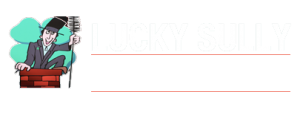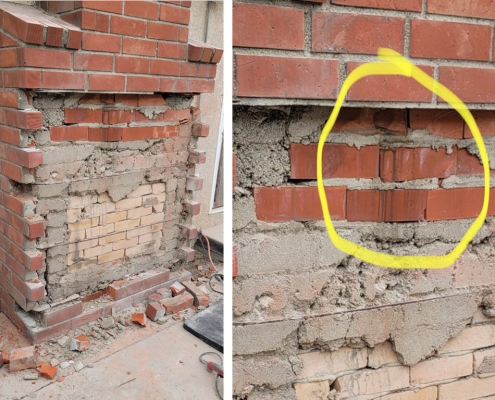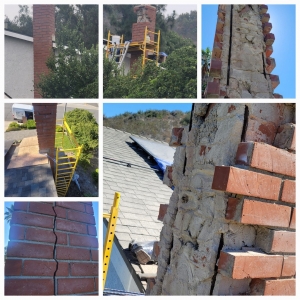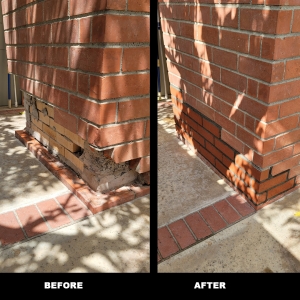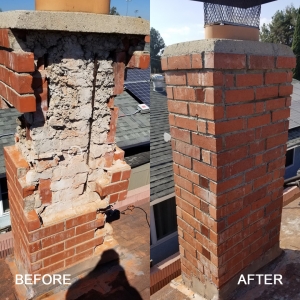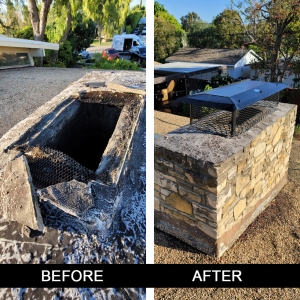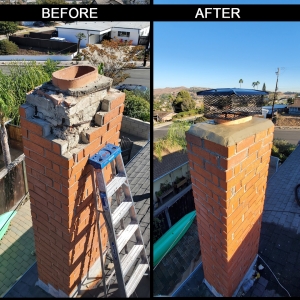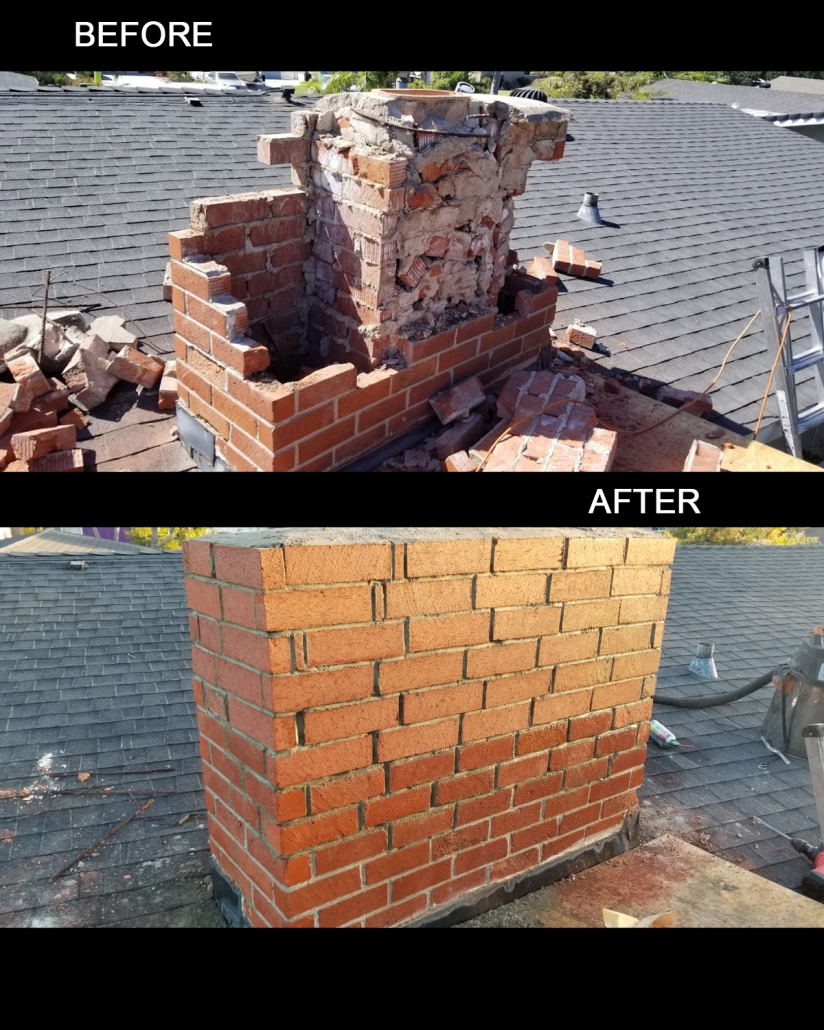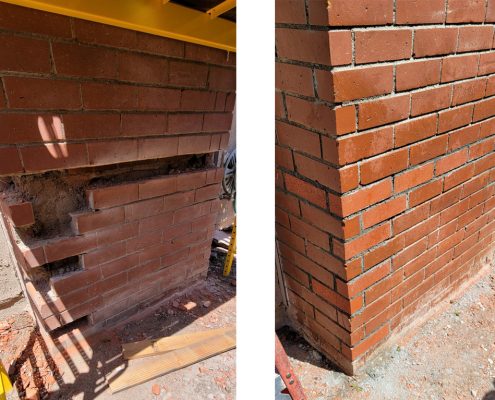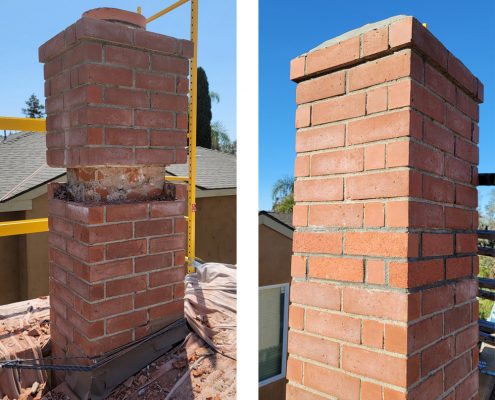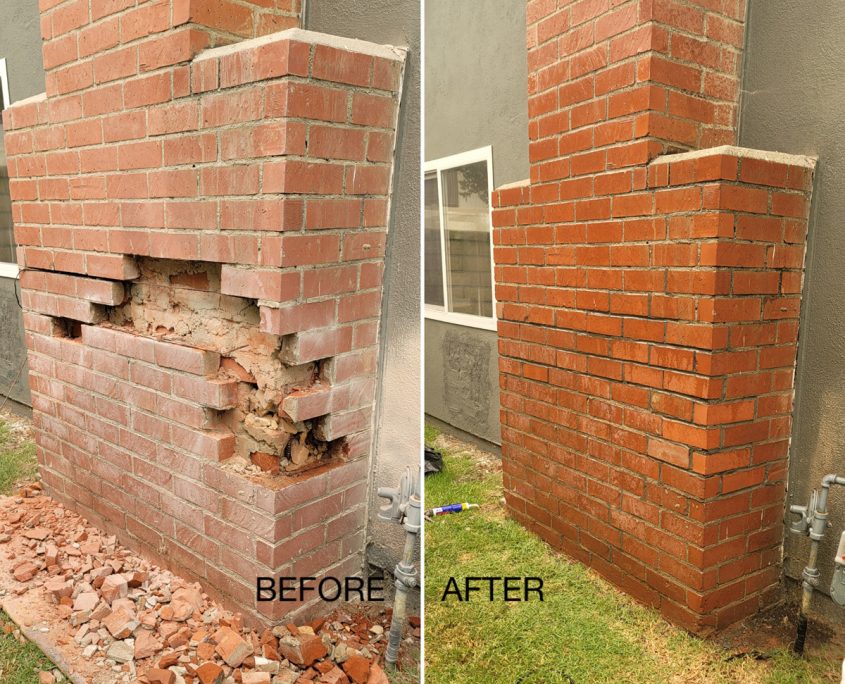Masonry chimney fireplace issue repaired
/in Chimney RepairThe purpose of your chimney is to properly vent the products of combustion (smoke) form your home. However, if the integrity of a chimney is compromised, say from a crack, this can be an issue.
If smoke and combustion materials are not vented away from your home they can build up in said cracks, thus causing fire hazards.
Cracks are one of the most common masonry chimney issues!
Chimney masonry repairs
/in Chimney RepairWe can repair most problems with chimneys including relining the flue, replacing a damaged damper with a top damper, repairing cracks in the fireplace, replacing gas lines, rebuilding the chimney crown and fixing exterior cracks in chimneys. It is important to get minor problems repaired before they become major expensive repairs.
Chimney Masonry Repair
/in Chimney RepairHere is a chimney masonry repair we recently did. See the below before and after photos.
Chimney Repairs
/in Chimney Repair, Fireplace SafetyWe recently completed some chimney repair jobs and below are the before and afters.
40 Year old home with 3 cracked chimney flues
/in Chimney Cracks, Chimney Flue, Chimney RepairThis is a video of a home in San Juan Capistrano that is approximately 40 years old. All 3 chimneys had severe cracks and gaps in the chimney flue. This is a severe fire hazard if the fireplaces are used to burn wood or gas fires. If you are purchasing a home that was built over 20 years ago, don’t take a chance that the chimney will not have gaps.
Approximately 40% of the homes that were built in the 1980s and earlier have cracks and gaps within the chimney flues. Regular home inspectors do not inspect the chimneys with a video camera and as a result most of the cracks are not detected. Approximately 15,000 homes per year in the U.S. have home fires which start in the fireplace/chimney.
Chimney repair
/in Chimney RepairHere is a recent chimney repair we did.
Orange County
(714) 342-7415
Aliso Viejo, Anaheim, Brea, Buena Park, Costa Mesa, Cypress, Dana Point, Fountain Valley, Fullerton, Garden Grove, Huntington Beach, Irvine, La Habra, La Palma, Laguna Beach, Laguna Hills, Laguna Niguel, Laguna Woods, Lake Forest, Los Alamitos, Mission Viejo, Newport Beach, Orange, Placentia, Rancho Santa Margarita, San Clemente, San Juan Capistrano, Santa Ana, Seal Beach, Stanton, Tustin, Villa Park, Westminster, Yorba Linda
Riverside County
(951) 258-4904
Alta Loma, Chino, Chino Hills, Corona, Etiwanda, Fontana, Mira Loma, Montclair, Norco, Ontario, Rancho Cucamonga, Riverside, Rubidoux, Upland
Long Beach
(562) 453-8867
Alhambra, Arcadia, Artesia, Azusa,Baldwin Park, Bell, Bell Gardens, Bellflower, Carson, Cerritos, Claremont, Compton, Covina, Culver, Diamond Bar, Downey, Duarte, El Monte, Gardena, Glendora, Hawaiian Gardens,Hawthorne, Hermosa Beach, Huntington Park, Industry, La Mirada, La Puente, La Verne, Lakewood, lomita, Long Beach, Lynwood, Monrovia, Montebello, Monterey Park, Norwalk, Palos Verdes Estates, Paramount, Pico Rivera, Pomona, Rancho Palos Verdes, Redondo Beach, Rolling Hills, Rolling Hills Estates, Rosemead, San Dimas, Santa Fe Springs, Signal Hill, South El Monte, South Gate, Temple, Torrance, Walnut, West Covina , Whittier
